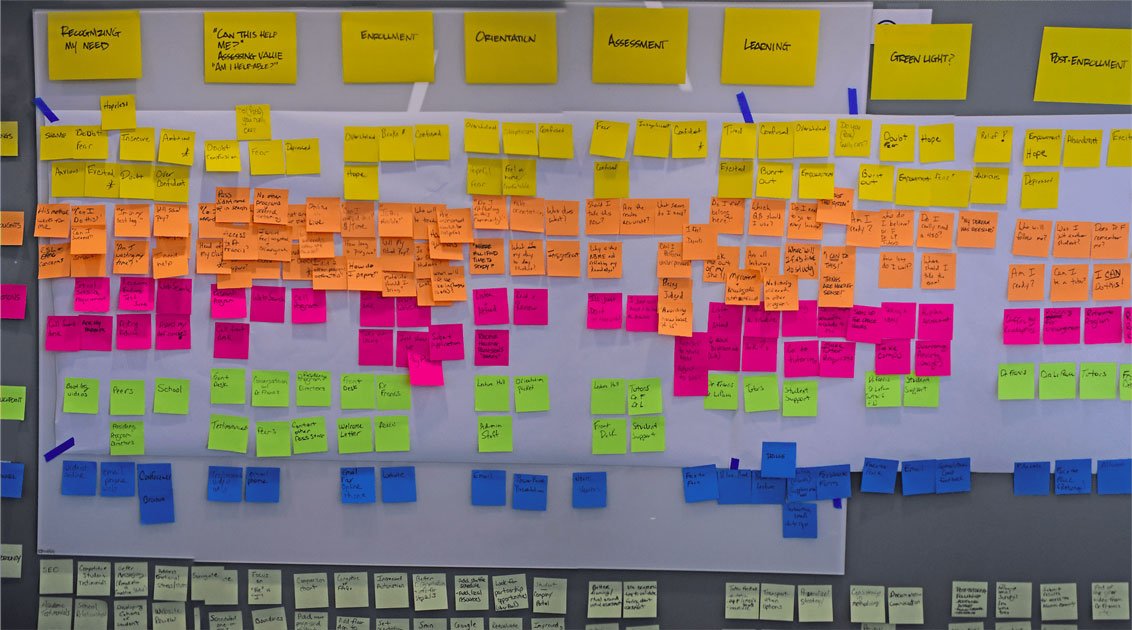Journey mapping might seem a bit cliché now that everyone is talking about it, but it is still the most reliable place to start if you really want to improve your customer’s experience.
I recently spoke to a group of leaders who serve at Chicago cultural institutions. I planned to use my time to introduce some core CX Design practices that I have seen transform organizations. As I prepared, I made the decision to leave the practice of Journey Mapping out in the interest of time and because I assumed most of these organizations had already engaged in some type of mapping exercise.
In hindsight, my intentional omission was a mistake. I found that out when I asked the crowd how many of them had done journey mapping for their members and almost none of them raised their hands. I shouldn’t have skipped Journey Mapping. And neither should you. Here’s why:
Reason One: Journey Mapping is the most reliable way to gain a true Outside-In perspective of your customer.
The relentless quest for efficiency that has dominated business practice in our time has yielded tremendous results in many organizations. Unfortunately, this focus has also resulted in the proliferation of organizations that are highly adept at the continuous improvement of internal processes but largely ignorant about how their customers experience those processes. Customer Journey Mapping addresses this unintended consequence by redirecting the collective attention of an organization from internal processes to the experience of the customer.
How does the mapping exercise accomplish this? The Customer Journey Mapping process begins with interviews of customers from one customer segment that is selected in advance. Surprisingly, five to ten interviews are usually a sufficient sample size to get started. Interviewers listen carefully to each customer tell the story of their interaction with the organization.
In the interviews, we find a technique from the design world called guided storytelling to be a reliable method for dialing in to the thoughts, feelings, and actions of the customer. Interviewers listen closely to the parts of the story where the customer journey breaks down while also paying attention to the complex of motivations that move customers from one stage of the journey to the next.

After a robust set of interviews with their customers, we were able to come back to them with the word that there wasn’t a single mention of burdensome paperwork in any interview. Customers didn’t seem to care about the paperwork at all. They saw it as a necessary step to getting where they needed to go.
Armed with this new understanding, the organization was able to redirect the resources they might have directed to digitizing the paperwork (a substantial investment!) to other more pressing issues. If they had gone with their collective intuition, they would have missed the mark and spent a lot of time and effort on something their customers didn’t care about at all.
These are the kinds of powerful, strategy-creating insights that we observe every time we do a mapping exercise. That’s why I won’t ever skip over mapping again. That’s why you shouldn’t skip over it either.
If you’d like to talk about exploring what it would look like to start the practice of Customer Journey Mapping in your organization, we lead introductory workshops in Chicago and Indianapolis every month. You can find information about those workshops here. We also help organizations all over the U.S. and you can find information about how to get started on our website.



